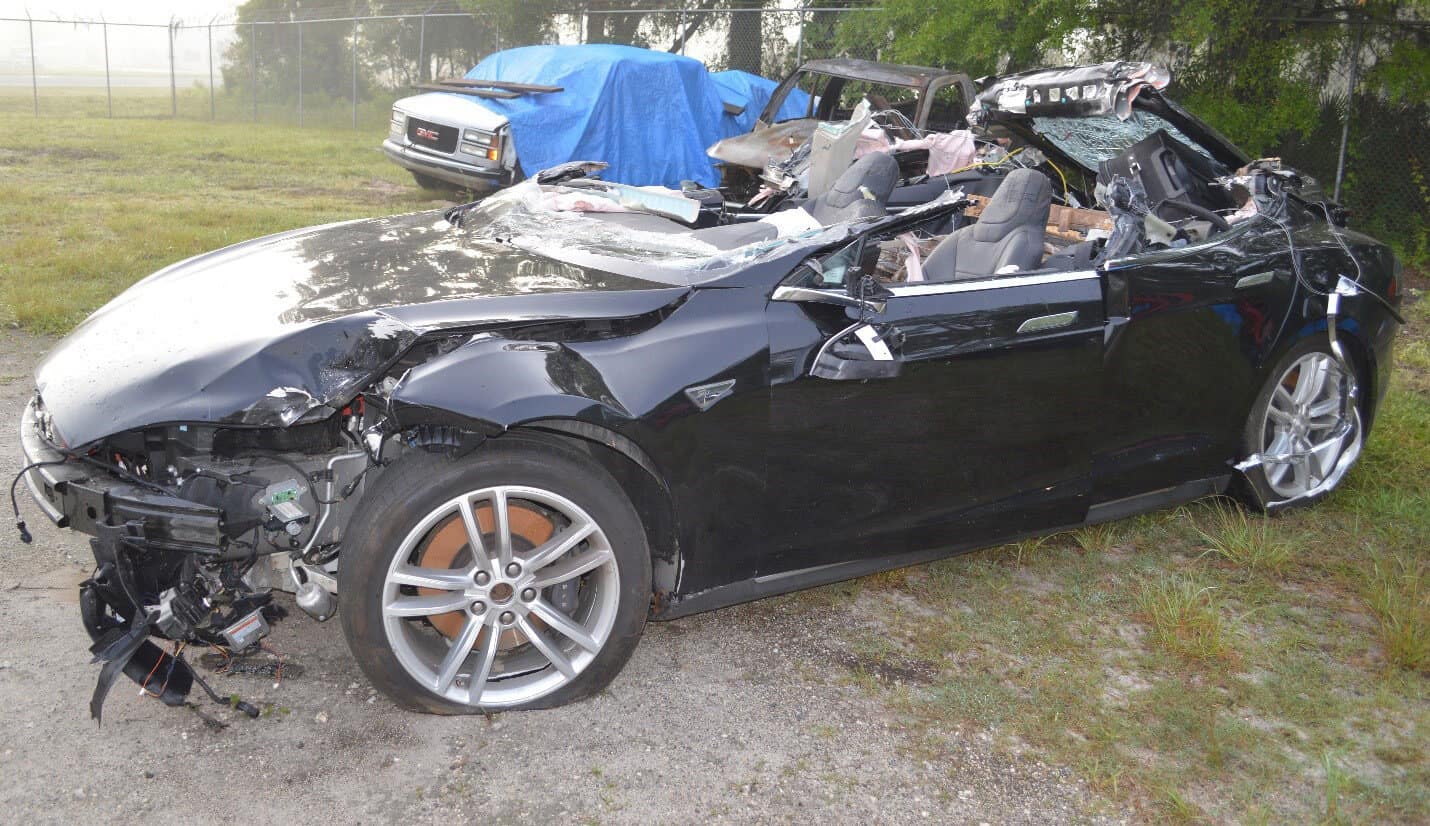
On Friday, March 1, 2019, a Tesla Model 3, possibly operating in Autopilot, slammed into an 18-Wheeler trailer crossing the highway in Delray Beach, Florida, shearing its roof off and sadly killing the driver. Jeremy Banner, 50, the driver of the Tesla, was pronounced dead at the scene.
What’s perhaps most shocking about this needless and tragic incident is the fact that it’s not the first of its kind. An eerily-similar incident happened on May of 2016 and raises questions about automotive products liability and Tesla’s Autopilot. Autopilot is Tesla’s trade name for its suite of crash avoidance technologies or driver assist technologies. In 2016, a Tesla, while in Autopilot, slammed into a white 18-Wheeler trailer that was crossing the highway. In the 2016 crash, the Tesla continued driving for 500 yards, roof-less, after the collision.
Was the Tesla Model 3 in Autopilot?
Investigators have not determined if Autopilot was engaged in Banner’s Tesla. But just like the 2016 crash, Banner’s Tesla slammed into a white 18 Wheeler trailer crossing the highway and continued driving for several blocks before coming to a complete stop.
Defects in Autopilot Technology
At least one of the vehicles involved in these similar Tesla crashes was in Autopilot mode at the time of collision and it’s very possible that both were in Autopilot. This raises questions whether Autopilot, Tesla’s suite crash avoidance technologies or driver assistant technologies, is defective. If Autopilot was engaged in Banner’s Tesla, why would a vehicle plunge under the belly of a truck? Why didn’t frontal crash avoidance not prevent the collision? Did frontal crash avoidance warning warn Banner?
According to an article published in CDLLife, following the 2016 crash, initial reports suggested that the defect may exist within the vehicles’ camera technology – the cameras may be unable to tell the difference between the blue sky and the white side of a trailer.
On one hand, Tesla has fully acknowledged the limitations of the cameras that come in their Model 3 vehicles; in fact, the cars’ manual even warns that the autopilot system is ill-equipped to brake or decelerate for stationary vehicles and that the cameras cannot detect all objects. Tesla nonetheless calls its suite of crash avoidance technologies or driver assistant technologies, “Autopilot.”
Liability for Crash Victims
When crashes like the ones cited above happen, victims and their families no doubt have questions about what happened, the legal system and their rights. Automobile manufactures have actively sought pre-emption and immunity to shield them from responsibility. Sadly, some have succeeded. While it is too early to know what happened in Banner’s situation and why, if, after a thorough investigation, it is established that Autopilot could have or should have prevented this tragedy, Tesla will have some questions to answer.
If you or a loved one is the victim of an automotive defect, especially a crash avoidance technology or driver assistance technology defect, we may be able to help. We use the law to make our clients’ lives better after they have been hurt, injured, or in an accident. And we have the know-how. When trial lawyer organizations across the country need help with crash avoidance technology, driver assistance technology, and autonomous vehicles, they call us. We have taught thousands of attorneys around the country about these technologies and how to navigate the legal system. We have done it for them. And we can guide you, too. We were amongst the first attorneys to visit with the National Highway Traffic Safety Administration, NHTSA, and have been at the forefront of these issues since. We have access to cutting edge tactics and strategies that others may not. Julian was the youngest chairman of the largest national products liability attorney organization and ran their attorney education program, is the head of attorney education for the largest national automotive products liability attorney organization, and head of attorney education for Texas’s largest trial lawyer organization. Julian also worked behind the scenes for a federal appellate court judge and federal district court judge. Julian’s positions within national and Texas trial lawyer and attorney organizations and his work experience make him uniquely qualified to help clients like you. Please call our law firm today for a free consultation if you’ve been injured in a crash.
